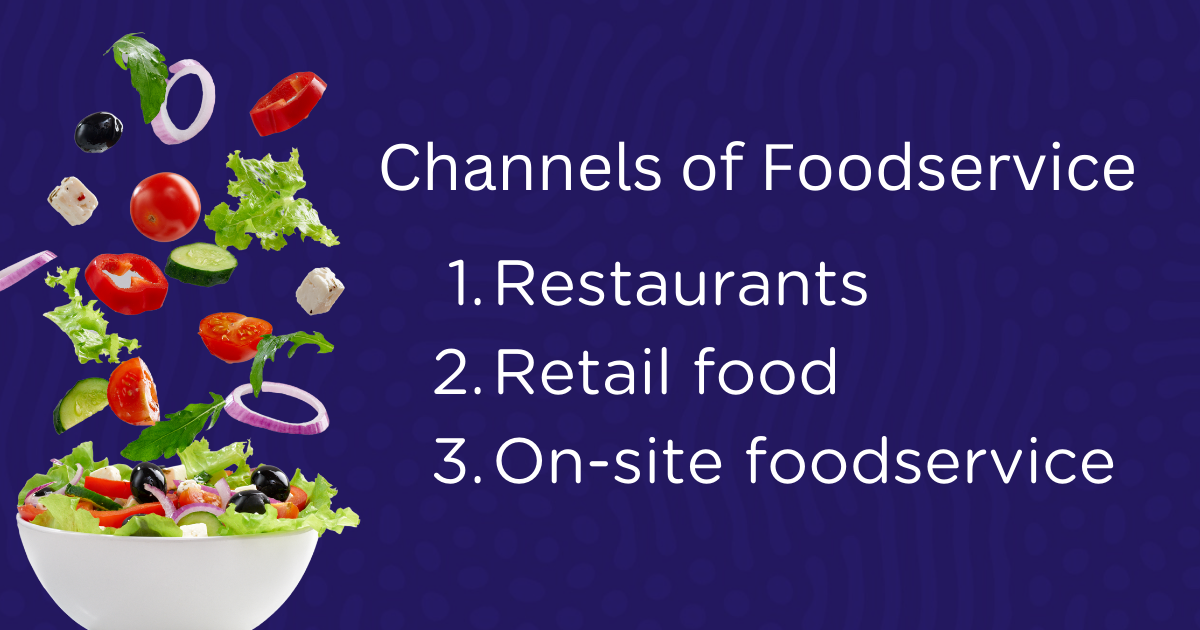The world of foodservice can bewilder even food and beverage industry veterans. Whether you’re making a transition from retail, or you’ve worked in foodservice and retail outside the United States, or you’re coming from outside the food and beverage industry entirely, the foodservice maze has twists and turns. If you’ve talked to our founder, Stephanie Lind, you’ve probably heard her say, “Foodservice isn’t hard, but it is complicated.” At Elohi, we specialize in helping brands navigate that maze and avoid wrong turns and dead ends – saving time, expense and frustration – on their way to sustainable profitability and success.
This series will look at the key players in American foodservice – consumers, operators, distributors and redistributors, brokers, manufacturers and co-manufacturers. Each of those players has its own goals and interests, which sometimes coincide and sometimes conflict with other players’ goals and interests. That’s where things get complicated.
What Is Foodservice?
Let’s start at the beginning. Foodservice refers to food that is prepared away from home, and delivered to a consumer (whether at the counter, at a table, or at their front door) ready-to-eat. It can include everything from a romantic candlelight dinner for your anniversary, to a business lunch at a country club, to room service at a hotel, to your child’s lunch at school or in the university dining hall, to a burger and fries at the drive through.
We’ll go into more detail about some of the other differences between foodservice and retail, but for now, one way to differentiate foodservice is by its absence of a bar code – the packaged salad at the grocery store gets scanned at the checkout (retail), but the salad you order at Applebee’s doesn’t (foodservice).
In some situations, foodservice dishes might be made from scratch, particularly in higher-end restaurants or specialty shops – egg yolks, acid, oil and salt make mayonnaise. Most of the time, though, the food on your plate will include some scratch-made elements and some packaged goods – a hand-patted hamburger, let’s say, but mayo from a jar. In other kitchens, the patty arrives already-cooked, gets reheated, assembled and served, and you squeeze the mayonnaise from a packet. All those situations count as foodservice.
Foodservice Channels
We can divide foodservice into three channels: restaurants, retail food and on-site foodservice, and then divide each of these channels into smaller segments, as well.

By contrast, at a full-service restaurant, customers order at the table, receive their food from table-service wait staff, and then pay. Full-service restaurants include chains and independents, and everything from Denny’s to Ruth’s Chris. Most often these restaurants have food preparation areas separated from dining areas, and the wait staff moves back and forth between those two areas, serving, solving problems, upselling (“Are you folks ready for dessert?”), and cleaning up.
Regardless of the level of service, whether they’re a food truck or a traditional, white-tablecloth establishment, restaurants attempt to turn a profit from their sale of food. Selling food and providing a dining atmosphere and experience drive their business decisions and day-to-day operations. If they can’t sell food, they’re done.

Retail foodservice, on the other hand, hedges that bet. Located inside retail establishments, they serve hot and cold prepared foods while also selling retail food or non-food items. A supermarket deli or lunch counter, for instance, provides a good example. In our distinction from above, the packaged salad we might buy from the produce section, scanned at the checkout counter, counts as retail. The made-to-order sandwich we have for lunch at the deli counter is foodservice. A convenience store that sells gasoline, magazines and nasal decongestant may also have a hot bar or bakery. Other retail outlets, like Walmart or Target, can offer foodservice, alongside all of the many non-food products and retail food items they sell. Foodservice retail, in other words, offers both — IKEA, for instance, sells furniture you have to put together yourself, but serves meatballs that are ready to eat.
Non-commercial or on-site foodservice, on the other hand, exists inside of another entity whose primary function or business goal is something besides either foodservice or retail. While the hospital provides its snack bar or cafeteria as a service to staff, patients and families, healthcare remains its primary purpose and provides its primary income stream. Delta Airlines provides in-flight snack and beverage service, but most of their profits come from the plane tickets we buy. The Department of Defense feeds members of our armed forces, but that’s hardly its main function.
Still, the on-site channel includes a wide market of opportunities for foodservice brands:
- K-12 schools, both public and private
- colleges and universities
- business and industry, including both white collar and blue collar cafeterias, food courts and dining halls
- recreational facilities like zoos, national parks, ballparks, and stadiums
- lodging and hotels
- transportation including food offered during a flight or train trip, and inside airports and bus/train/ferry stations
- hospitals, including food for staff, patients, and visitors
- long-term care and senior living facilities
- vending machines
- catering
- military food, at both domestic and foreign installations
- corrections facilities
These establishments may be non-profit or may derive their profits primarily from services other than their foodservice facilities. Often, they choose to focus on their more direct goals – whether that’s educating children or keeping the trains running on time – and outsource food production and service to contract management companies.

The foodservice industry provides a dizzying number of opportunities and possibilities for new brands, in any of its channels. Each of those channels has its own labyrinth of producers, manufacturers, distributors and operators, and its own vocabulary. From supply chain and logistics, to pricing architectures, to B2B sales and marketing, foodservice isn’t hard, but it is complicated and requires expertise in a lot of different areas, and a different skill set from retail food.
Fortunately, at Elohi our team includes people who have years of experience and accomplishment in all areas of the value chain, to help your brand find a sure path to foodservice success.


Recent Comments